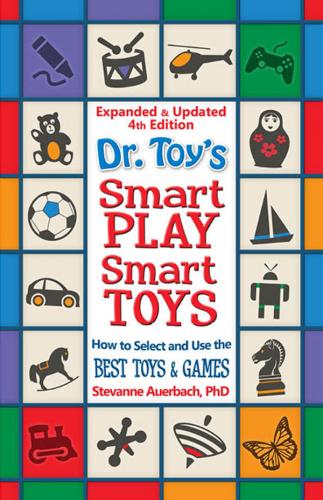Make The Most of Toy Shopping
In each chapter we will discuss specific things to look for when selecting toys for each stage of a child’s growth, but there are some basic points that you should remember for any toy that you buy.
Shopping Guidelines
What are some of the qualities to look for when selecting a good product?
DESIGN. The product must have been tested carefully by the manufacturer with the intended age group. The best possible materials should have been used in assembly. The item should be durable. The toy should be easy for the child to use and to keep clean.
QUALITY. Consider what materials are used to make the article. Is the product appealing in color, shape, and workmanship? We expect to get what we pay for but, unfortunately, sometimes this is not true and we are disappointed.
DURABILITY. How long will the selection last? Is it childproof? Can it be easily broken? A plaything should be long lasting, substantial, and made of good materials.
SAFETY. The toy must be tested by an independent toy testing laboratory. It must meet safety standards and requirements. See more details on toy safety later in this chapter and throughout the book.
VALUE. You will want a product that lasts as long as possible and has many different and long-lasting uses. Good examples of toys with high play value are blocks, construction toys, and yo-yos. The item should have clear instructions so you and your child are guided to its best use by the designer and the manufacturer.
APPROPRIATENESS. The toy must fulfill the usual play patterns for the child’s age. Products that are too complex are easily frustrating. Toys that are too easy are boring. When necessary, show the child how to use the plaything properly. It’s best, however, to allow your child to discover how to use the product himself, depending on his age and ability.
Dr. Toy’s Product Guidelines
Another important way to look at toys is by evaluating their active, creative, and educational features.
Active playthings improve the child’s physical activity and exercise. They help develop large and small muscles, eye-hand coordination, dexterity, and encourage children to learn and practice climbing, crawling, and improving balance.
Items that assist in active play include balls, bicycles, blocks, skates, punching bags, jump ropes, pounding toys, and ride-ons. Other active products include construction toys, adventure props, and manipulatives such as puzzles. Children do enjoy “destructive” play, which means breaking down or mixing up things like sand, clay, or blocks. Kids like to build up, take apart, and punch things. Why not? It’s fun!
Creative toys stimulate the child’s imagination at all levels. She can experience surprise, can expand her thinking, and she will be encouraged in self-expression.
Examples of creative toy products are blocks, crafts, dollhouses, mirrors, musical instruments, puppets, stuffed animals, and art supplies. You will also want to select items to foster the child’s dramatic ability, social skills, musical and artistic development. Puppets, games and cooperative activities help children to interact with each other, while being considerate and taking turns may be fostered with baby dolls and art or music activities.
Educational aspects of a toy help a child learn specific skills, and sometimes several skills at once. Any toy can be educational if the child’s shown how to use it in an enriching way. The right object can help with reading and writing, and can build skills, which prepare the child for science and counting. You will want a balance of playthings to stimulate your child’s mental abilities, challenge his thinking, and help him in problem solving.
Some items, which contribute in the educational arena, are board games, blocks, books, checkers, construction toys, pegboards, puzzles, science projects, hobbies (stamps or coin collecting), software, CD’s, audio- and videotapes, apps, microscopes, telescopes and other special equipment.
Certainly you, as “Play Guide,” must think about future school participation, after-school activities, vacation times, sickness and other encounters the child will have. How can you assure that the toys he plays with now will help ready him for future demands? The answers can be found in this book.
Dr. Toy’s Tips on Selecting Toys
